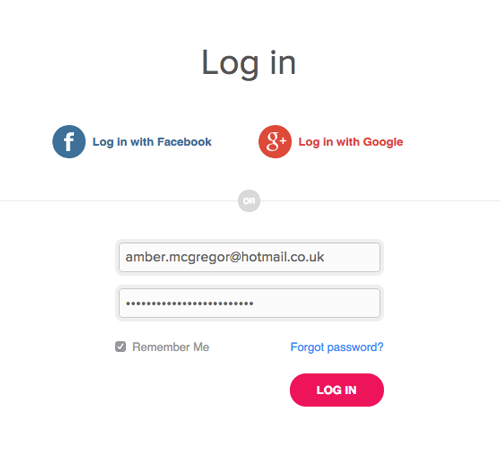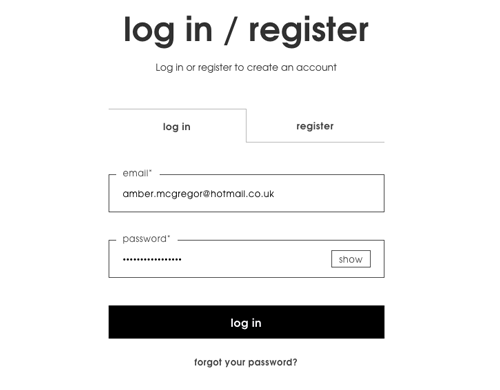How do bad, and in some cases – life-threatening – designs, occur?
Every designer is capable of making wrong decisions that result in an unusable design. However, do we neglect to understand the true consequences of creating a design that is not fit for purpose? In this section I will investigate the lack of end-user involvement throughout the design process, and when we neglect the importance to implement usability and design principles in the early stages of a design how it can result in detrimental implications.
Throughout my research I discovered most issues stemmed from the same problem, lack of end-user knowledge and involvement. Systems seemed easy to use, this was due to the people creating them understanding how they worked. However, this created the assumption that the end-user would also be able to navigate the system with ease, although this was not the case. Tragic Design by Jonathan Shariat and Cynthia Saucier explains, “Bad designs are the ones that collide with human behaviours and cause undesired friction”. A design built without the end-user in mind has been designed to fail.
Designers have a responsibility to make sure that what they are working on functions properly, as well as being usable. Often as we are working on a design we begin to focus on the appearance and implement designs that are aesthetically appealing, therefore neglecting the fact that they may not be functional for the end-user. Throughout my research I encountered the impact of designs that are unfit for purpose and how it resulted in end-users facing problems that the designer never anticipated.
As stated in Tragic Design, “Badly designed products serve their creator (or sponsor) first and the users second”. As designers we need to focus on designing for a user rather than designing for ourselves, or for a sponsor that may not understand the users needs and focus more on what they feel is important. Often when an employer, or sponsor, wants a design to look and function a certain way we may feel obligated to follow their requests, even though it may not be suited to the end-user. As designers we have a level of responsibility to explain the importance of end-user involvement and clarify how a design must be built around the users needs, and not around personal wishes.
Don't Make Me Think by Steve Krug, looks into how the end-user actually uses a website and the various things that we need to consider whilst we are designing. It explains the importance of designing in such a way that the end-user finds a system intuitive and can work everything without being confused or mislead by the interface. Krug explains that “Using a site that doesn't make us think about unimportant things feels effortless, whereas puzzling over things that don't matter to us tends to sap our energy and enthusiasm – and time”. This book gave me a clear understanding of how we need to design so that interfaces are self-explanatory, therefore allowing users to figure out how things work without causing them frustration. The more we understand a user and how they actually use what we are designing, then the higher the likelihood that we will design something that they can use with ease.
An example of how we can cause confusion with an interface is the interaction between a user and an online form. Often features are added that make labels disappear when a user begins to type in the field. This feature may look appealing, however, it is problematic for the user. When we add these features we are forcing the end-user to remember what information they have filled in, which can cause frustration. It is important that when we design we make things clear and concise.


A clearly labelled text field allows a form to be easily filled out without causing any confusion or frustration.
Bad design occurs when we do not have a clear idea of who the end-user is. The most important factor that you need to address is the assumption that an average user is a myth; every product has a specific target audience that you need to focus on throughout all aspects of developing a design. Involving the right users is critical for the success of a design, therefore it is vital that you design for the correct audience and get a solid understanding of what they require from a system and the various things that they find vital.
When you design for everyone, you design for no one
Darko Čengija
To prevent a design not being suitable, we need to establish early on who the end-user will be and understand what they require from a product. A good way of understanding the users that you are designing for is by creating user personas based on research into a target audience. A user persona gives an overview of what the users needs are stating various information such as goals, frustrations and may also include information on their technical ability. If we have a clear idea of who the end-users are then we can put them at the forefront of every aspect of the design.
Another benefit of creating a persona of users is that it makes us see them as real people. When we dehumanise the end-user then we neglect to understand how a design can truly impact them, or the people around them. Tragic Design explains that when we disconnect from the end-user we are prevented from feeling the shame and guilt associated with the end-user being hurt due to something that we have created. It is important to understand an end-user and have a connection with them and their needs. By truly understanding the user we connect on a more personal level and design with them at the centre of every decision we make, therefore we create something that fits their needs and requirements. As we design we constantly need to think about the user and refer to the issues that they have and aim to fix their problems and improve their lives. Often we forget that there is sometimes far more at risk than a product not selling, we risk taking a life.
If we neglect to involve and consider the end-user throughout the design process then we as designers need to accept that the reason it has failed – or is failing – may be due to our own mistake of not prioritising end-user involvement. It is common to place the blame on the end-user by claiming that are incapable of using a system. There are various sayings, and acronyms that place the blame on the user such as PEBKAC, “Problem Exists Between Keyboard and Chair”. When we neglect to design around the end-user and then proceed to blame them for being unable to use a system then we are not claiming responsibility for how we failed in the design process. The end-user is incompetent of using a system that has not been designed with usability in mind.
When we design with the end-user at the forefront of all our decisions we design a product that is tailored to their needs. We understand that it is our role as designers to create something that is usable, functional and finally aesthetically pleasing. It is common that user involvement can be seen as an expensive cost, although it is important to remember that, as stated in Tragic Design, “Every dollar spent on user experience brings up to $100 in return”. The satisfaction of the end-user is vital in the success of a product, we are designing and developing something for people to use to improve their lives, and therefore they should constantly be the main priority in all decisions that are made.
© Written & Designed by Amber McGregor